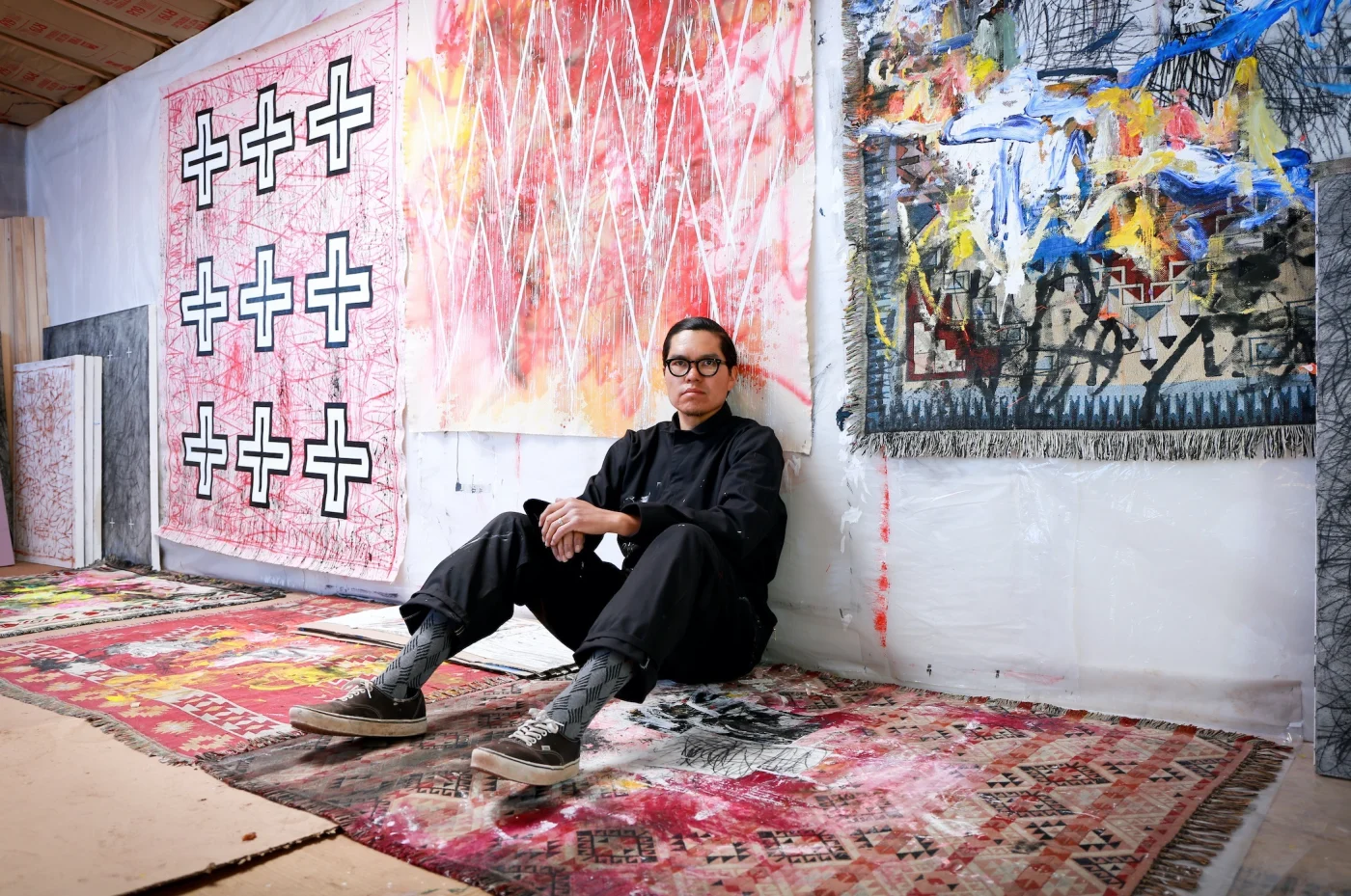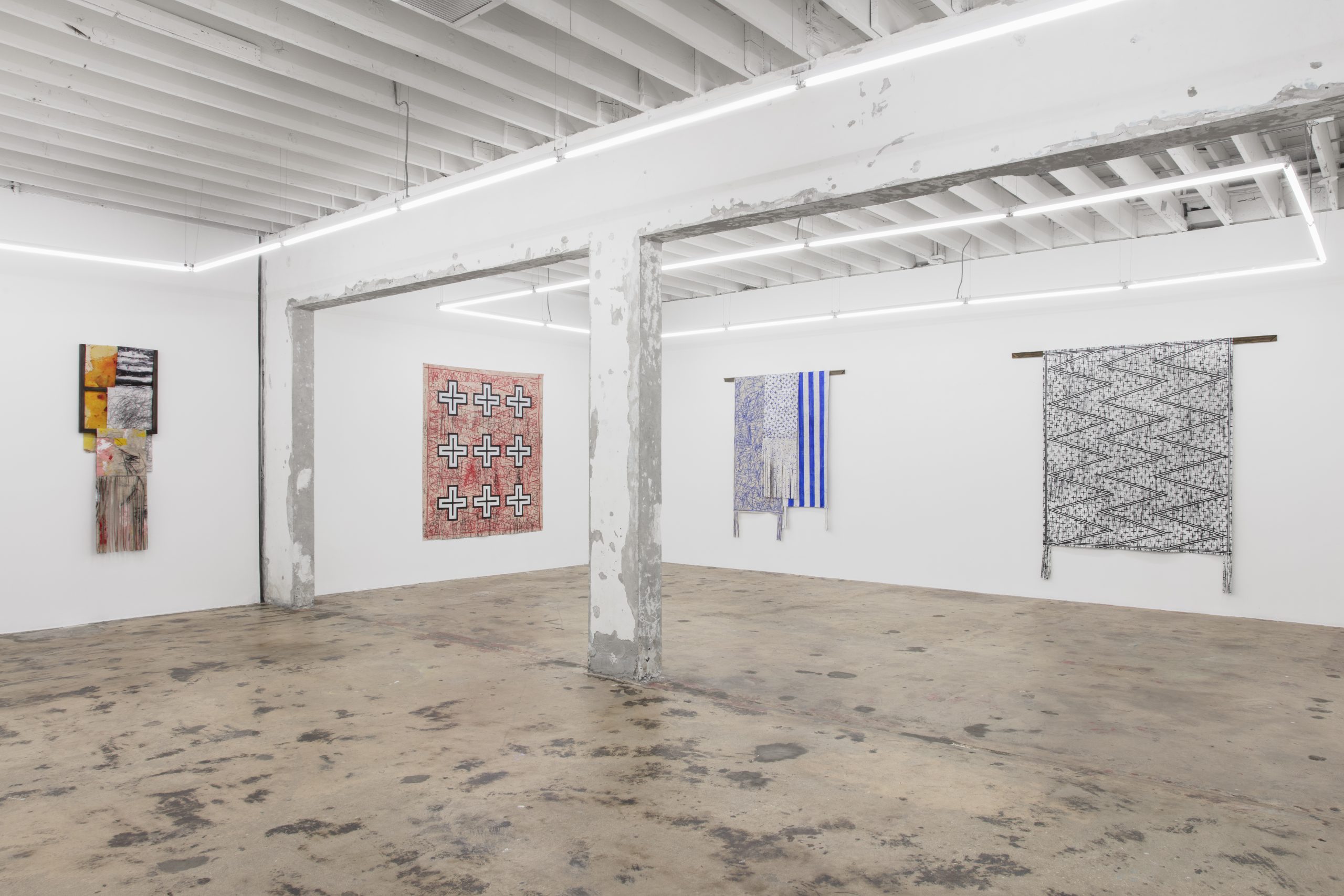Patrick Dean Hubbell: ‘Spiritual embodiment’ from Navajo artist

By Sandra Hale Schulman
Canvases become shawls, and pigments and minerals provide the color patterns to tell stories in the art of Patrick Dean Hubbell, Diné, in his first solo exhibition, “Everything About You,” that runs through May 28 at Nina Johnson Gallery in Miami, Florida.
Studious and soft-spoken, Hubbell lives and works on a ranch in the Navajo Nation where he makes art from the earth, using colored pigments collected from his homelands to create two-dimensional paintings and drawings.
Taught sewing by his grandmother and graphic art design by his father, Hubbell fuses his background and art training to embody what he calls “spiritual entities” into his work.
“The foundation is our Diné philosophies as it pertains to nature, the cycles of seasons, times of day, different stories within how I was raised surrounded by elders and the ceremonial life,” he said during a walk-through of the exhibit before it opened.
His use of natural pigments began after he was awarded a Pollock-Krasner Foundation grant in 2017.
“Through that grant, I began a project where I collected natural earth pigment from around the Navajo Nation,” he said. “It connected to the use of Navajo ceremonial sand painting. I began to make a synthesis of traditional manufactured paint and the natural pigment paint that I make, using the color variation within the regions of the Navajo Nation.”
The canvases began to take on new life as robes, blankets and fringed shawls hung on stretcher bars to “deconstruct that substrate and specifically deviate from that Western ideology of what a painting is,” Hubbell said.
“It’s still in the conversation of painting, because I’m still using that stretcher bar, I’m still using all of the materials of what painting is normally thought to be, but then I’m also using the foundation of my Indigenous identity through the look and the reference to the textile.”
The works, he said, are “alluding to that figure of spiritual embodiment of how it relates to the stories and philosophies that I’m referencing as well.”
The cross shape is recurrent in the works, a New Mexico symbol that he says is “a strong history within the way weavers use it and in traditional Indigenous arts through basketry, pottery, beadwork, blankets, and word textiles.
“I’m using that as the original reference, but also allowing some of these patterns to speak to geometric abstraction, and genres of different schools of painting,” he said.
One piece started with a curio textile – a black-and-white, Native-patterned blanket he gathered from a truck stop. He then painted over it with the earth pigment paint.
“I know it’s for the tourists,” he said. “A lot of them carry Native-made things but this one is not Native; this is fully foreign manufactured, so this is part of the reclamation of bringing back that Indigenous-inspired object, and appropriation, and reusing what has already been taken.”
Click here to read the full article
